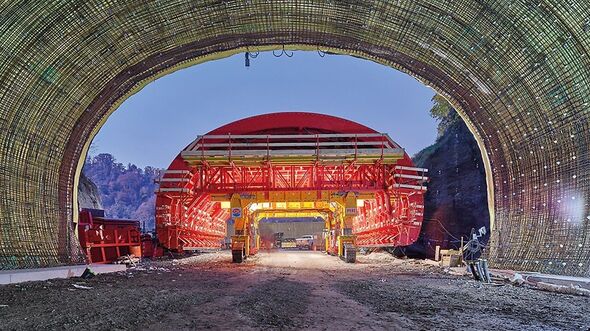An incredibly important infrastructure project in a major European country is set to transform the urban area and revolutionise travel.
The A26 tunnel project in Linz, Austria, aims to ease congestion on roads in the local area and across the country, taking the burden off city roads.
Linz is the third-largest city in the country and the capital of Upper Austria, so the traffic network can become incredibly strained during the day.
It’s also the first to construct access tunnels with a fully hydraulic formwork carriage and caterpillar drive. Construction of the tunnel, as well as access and exit routes, began construction in May 2020.
The ambitious project aims to relieve Linz city centre of 20,000 cars a day, and with the underground road, air and noise pollution in the urban area will be reduced even further.
The main part of the project is a 300m long and 22.5m wide suspension bridge “floating” above the Danube River – the second longest in Europe.
The suspension bridge, part of the A26 highway, was built between 2019 and 2023 as a bypass around Linz and is connected to the existing traffic network via tunnels.
The five access tunnels to the suspension bridge span an impressive 1,600 metres, each with its own cross sections, profile transitions, bends, and gradients.
Instead, the bridge has no supporting pillars and is directly fixed into the steep rock faces of the Danube’s bank using over 100 rock anchors.
It was constructed by moving small, assembled elements by barge along the river. The elements were then lifted with jacks and hooked to hanger cables.
Though no supporting pillars exist, two rows of twelve steel cables, each hooked to concrete anchors in the surrounding rock, hold up the suspension bridge.
The A26 highway is a four-lane bypass around Linz, crossing one of the busiest waterways in Europe, rail tracks, and two federal highways.
